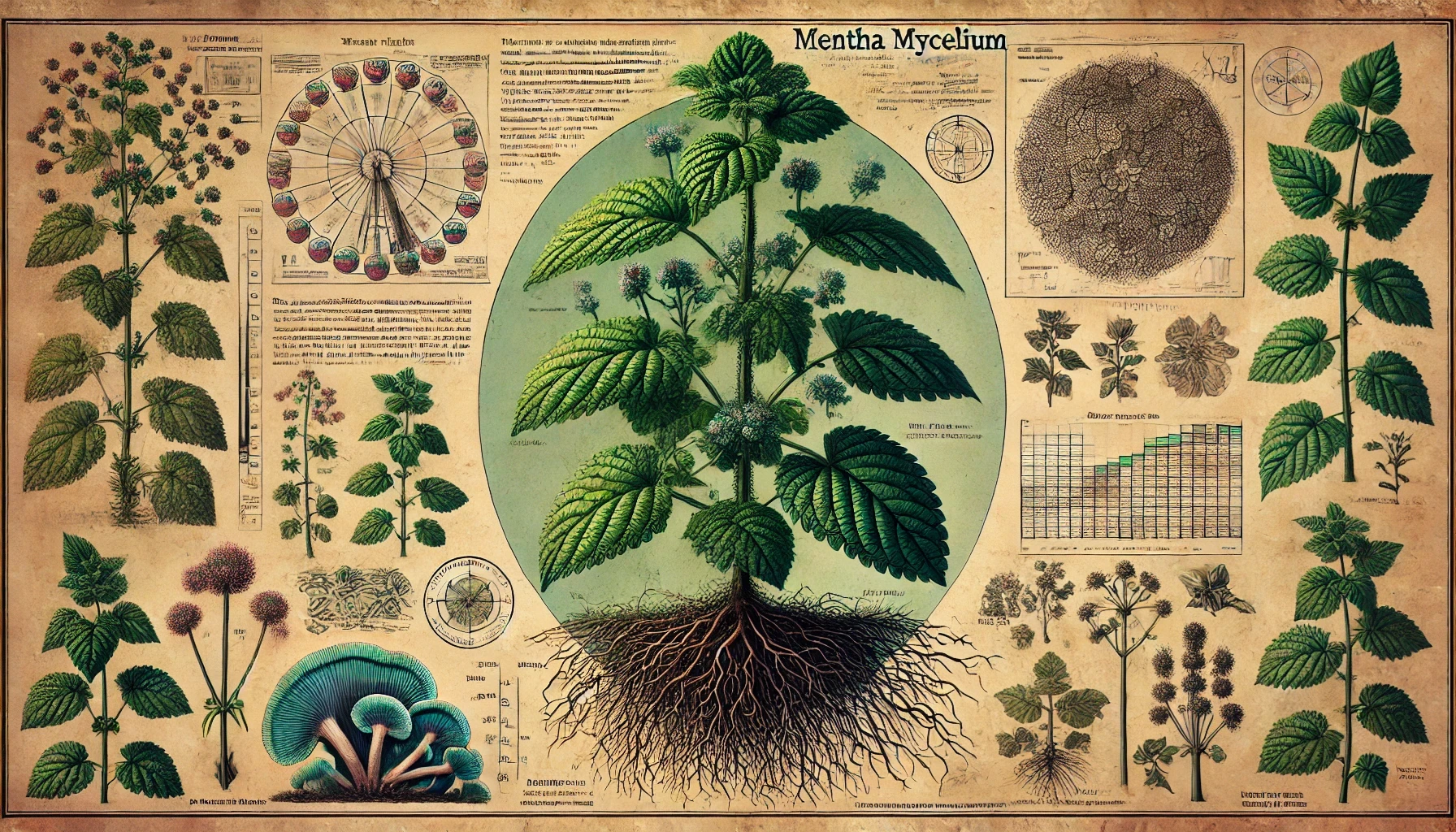Visual Description
Mycora Mint grows in low, rounded bushes of deep green leaves edged in a cool, bluish tint. Its surface appearance is unassuming, but when dug from the soil, one finds a web-like fungal network threading out from its roots in every direction—linking not only to nearby Mycora plants, but to entirely different species of flora.
Each leaf carries a faint shimmer when moist, and during flowering, the plant produces small purple blooms that sway even when the wind is still.
Habitat and Growth
The plant thrives in damp flood plains, moist riverbanks, and shaded woodland undergrowth, often spreading horizontally through its fungal root system. Patches of Mycora Mint rarely appear alone; the species favors dense, biodiverse ecosystems where its network can anchor into the larger chorus of plant life.
The plant communicates chemically and energetically with its surroundings, sending early warnings of drought, injury, or predation through its subterranean mycelium. Entire riverbanks have been known to shift flowering cycles or nutrient behavior due to these messages.
Alchemical Use and Preparation
Mycora Mint is prized for its subtle but profound mental attunement properties. When a small portion of leaf is chewed raw or brewed into an infusion, it enhances the user’s capacity to sense emotional nuance, unspoken tension, and shared thought patterns in nearby individuals. It fosters a sense of mutual understanding and group cohesion, particularly in close-knit communities or focused tasks.
Used in moderation, it is a favorite among naturalists, communal healers, and cooperative laborers, especially when joint efforts require unspoken coordination or intuitive cooperation.
Harvesting is best done at dusk, when the plant’s network has finished exchanging signals for the day. The leaves should be stored in dark, slightly humid conditions to preserve the vitality of the fungal strands still latent within.
Warnings and Curiosities
Overconsumption of Mycora Mint may cause the user to feel too deeply, becoming overwhelmed by the emotional residue of others—even faint impressions from nearby plants, animals, or terrain. The resulting sensation is often called “the pull of the root,” and can leave the user emotionally disoriented or physically exhausted.
It is frequently confused with Wild Mint, though the latter lacks the blue-tinged leaf edges and fungal scent. True Mycora also resists being picked by hand—its leaves are oddly springy and may withdraw slightly when approached insensitively.
Historical Notes and Folklore
In folklore, Mycora Mint is said to be the “herb of listening,” and old oral traditions include stories of groves where every tree and bush had once tasted the root, making the whole forest hum with a single thought.
In some village traditions, community fires are lit only after the eldest and youngest each chew a Mycora leaf in silence—to connect the old roots to the new.
A common belief holds that Mycora does not choose where to grow, but responds to where its network is needed, often appearing in places where emotional healing or collective action must soon take place.
“The mint doesn’t give you other people’s thoughts. It just removes the walls you didn’t know you’d built.”
— Ellaswen Tairil, Warden
The Loom Beneath Us
In the marshes of southern Mystwood, a team of druids once set up camp to heal a wounded glade. They drank a Mycora Mint infusion nightly—just a pinch, shared evenly.
By the third day, they had stopped assigning tasks. Tools were handed over before words were spoken. Campfires were rebuilt without discussion. Songs began, shifted, and ended in a strange, seamless rhythm. They described it as “working inside a single body with many hands.”
They completed three weeks’ work in eight days.
But when the rains came unexpectedly, no one moved. Each waited for someone else to call out, to panic, to lead. By the time they acted, the camp was half underwater.
After that, they rewrote their field protocol:
“No Mycora tea two nights in a row. Let the silence breathe.”— Iven Thorne, Caretaker



Comments